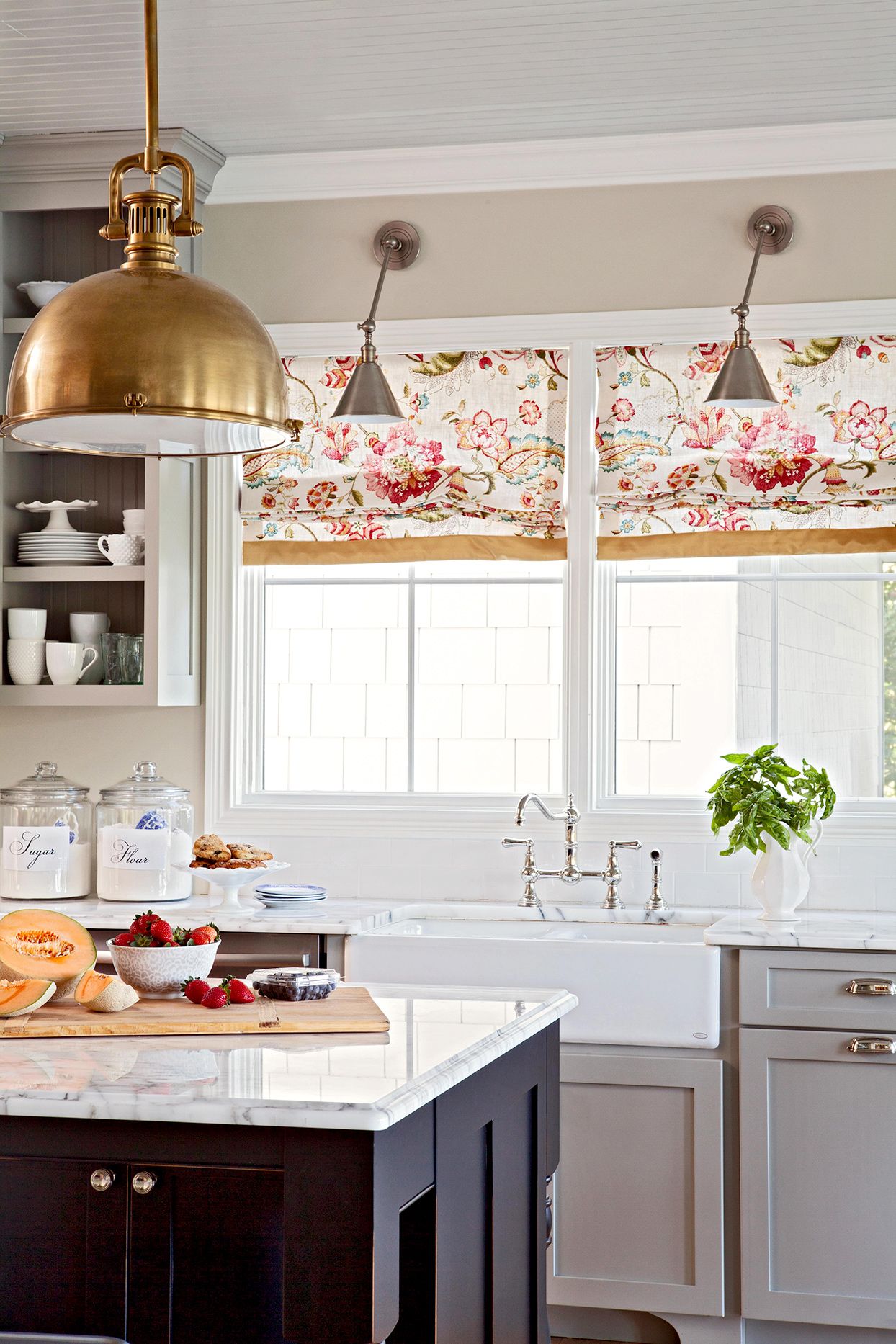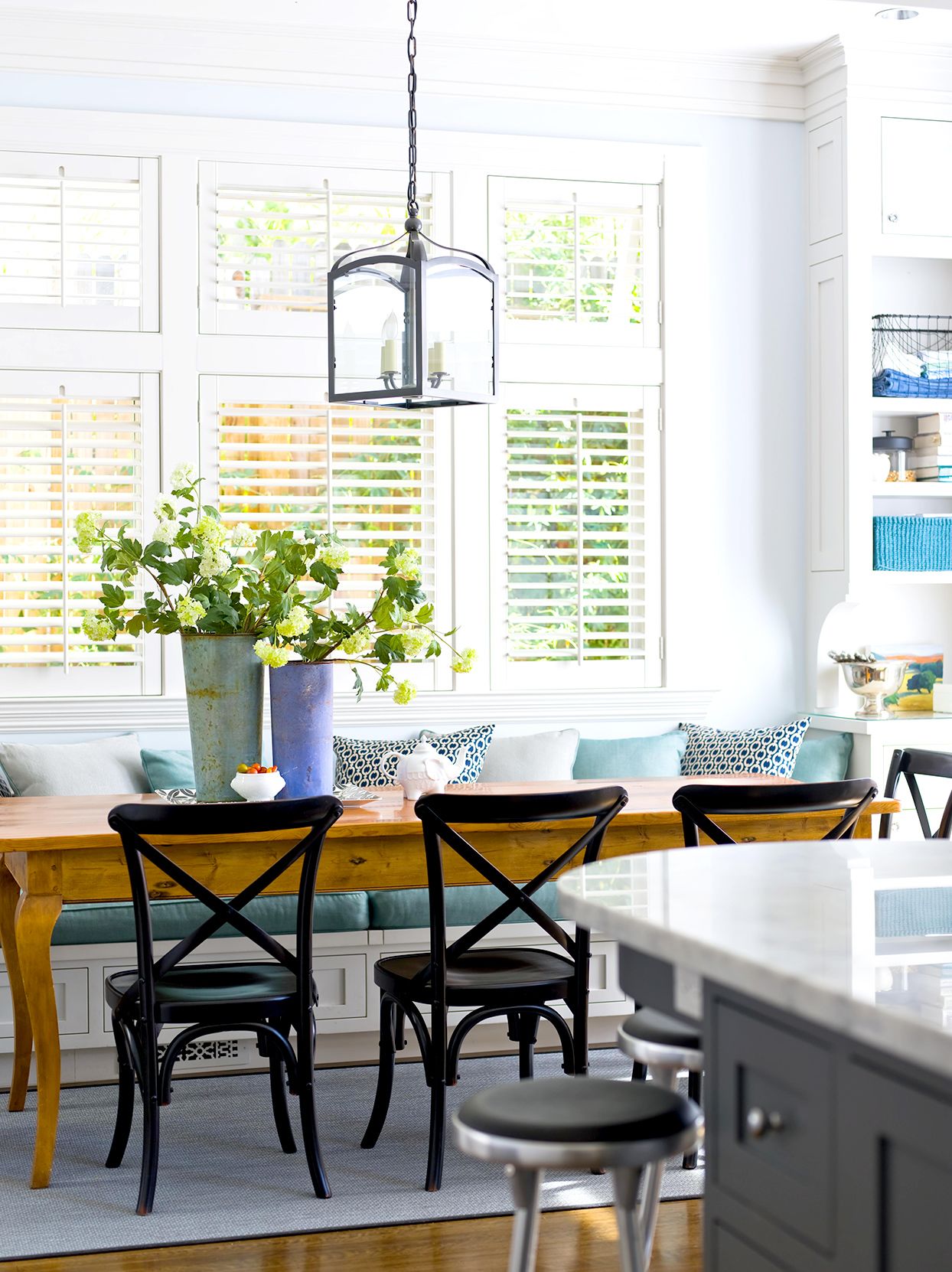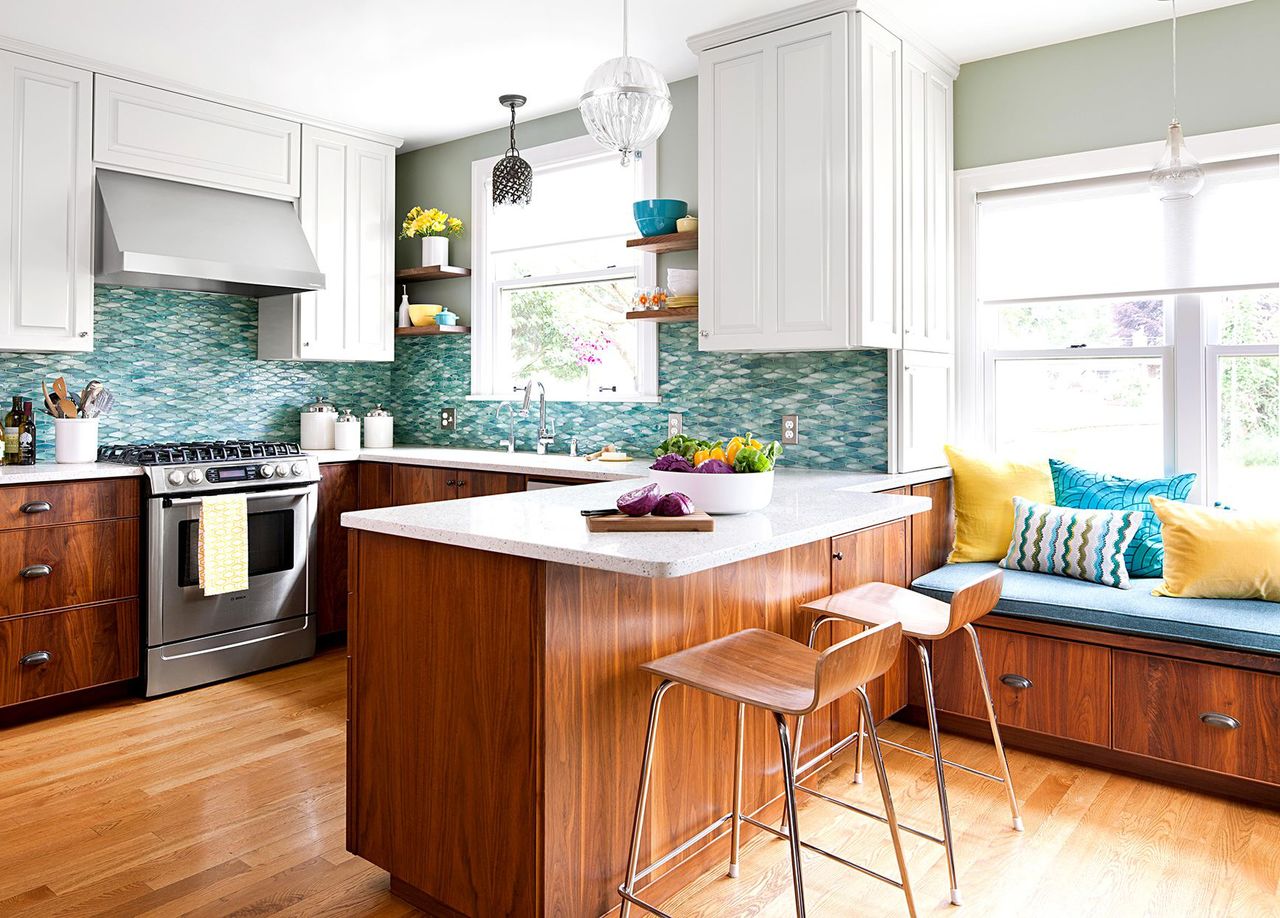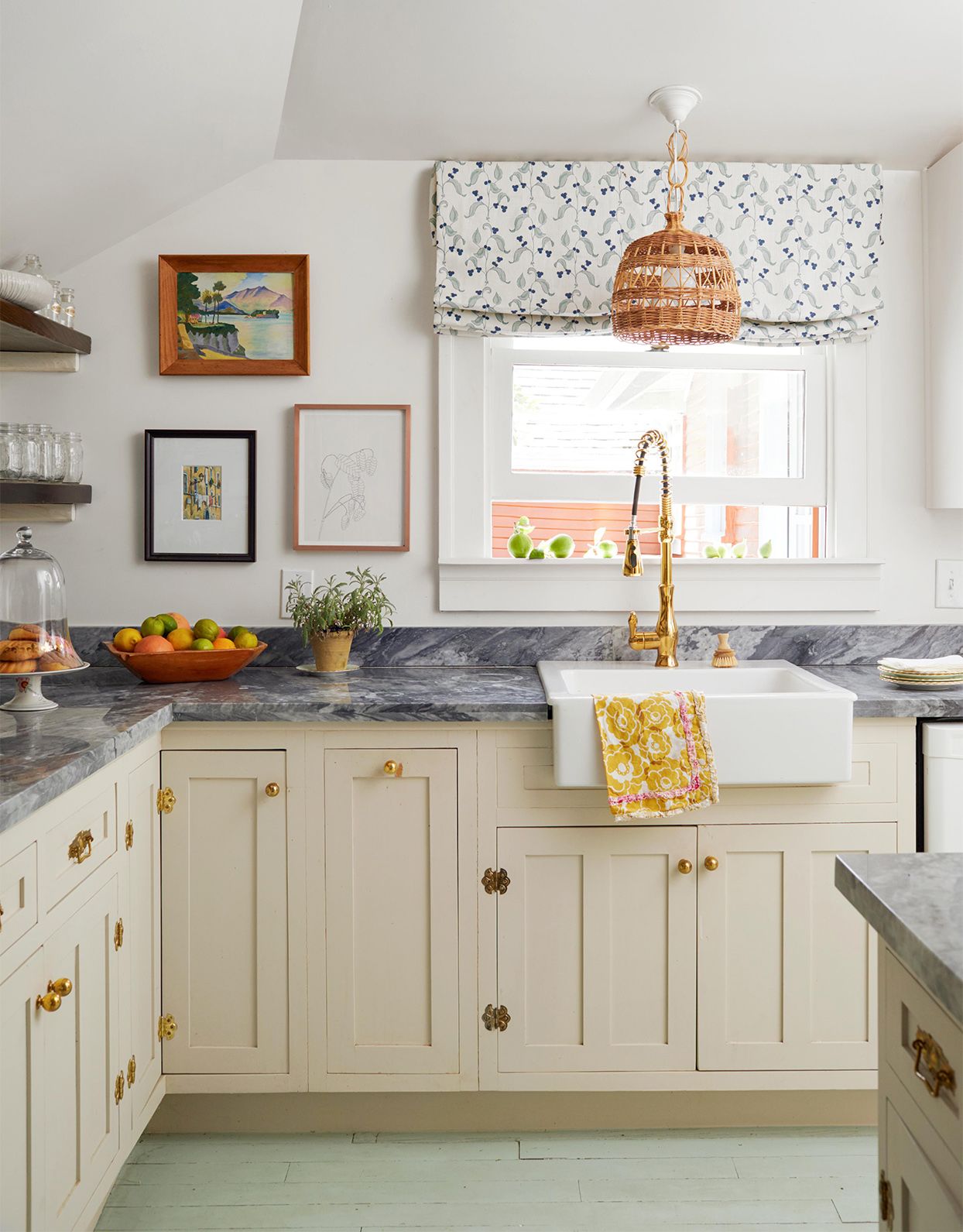In a room as functional as a kitchen, window treatments provide one of the few elements of softness and decoration amid utilitarian appliances and hard surfaces. Curtains and shades can deliver a pop of color, pattern, or texture that the room otherwise lacks while boosting privacy and controlling natural light. Because you use this hardworking space every day, it's important to employ kitchen window treatment ideas that suit your style and needs for daily use. Here are four things to consider when choosing kitchen window treatments to give your cooking space a polished, personalized look.
1. Use as Decoration
Window treatments serve as pretty accents in the kitchen. In areas outside the work core, such as breakfast nooks, consider hanging floor-length curtain panels, which offer big doses of color and pattern when they flank a large bay window or set of sliding doors. On a smaller scale, a colorful swag draped over a single window can also make a bright statement. Roman and roller shades reveal texture and pattern when they are lowered, and stationary valances and cornices help highlight windows you want to draw attention to. For the most decorative effect, choose fabrics that have eye-catching colors and designs, and have fun with trims, tassels, fringe, or bold banding to give your kitchen window treatments a finished look.
2. Add Privacy
Kitchen window treatments might not seem necessary until you realize the neighbors can see straight into your breakfast nook. For temporary privacy issues, such as when you're reading the Sunday paper wearing your favorite fluffy robe, consider quick-draw curtains, blinds, or shutters, which close at the tilt of a wand. For consistent privacy needs, look for screening materials that let you see out and allow some daylight to pass through while blocking views in. Try cellular shades and roller shades made from translucent or woven materials, or hang sheer fabric curtain panels. Be sure to perform a quick check before choosing kitchen window treatments: Turn on the lights in the kitchen at night, then head outside to see what's visible through the windows with the blinds or curtains drawn.
3. Control Light
Sunlight, particularly UVA and UVB rays, can be damaging for both our bodies and our homes. Direct, harsh sunshine can raise interior temperatures, fade wood floors, dull cabinet finishes, dry leather, and wash out fabrics. To protect your kitchen from too much sun, look for window coverings that advertise their protecting abilities. Many sheer treatments, such as cellular and solar shades, will disclose how much of the UVA and UVB rays they screen while still allowing in some light.
For complete light control, choose an opaque window treatment, such as blackout shades or curtains that are lined with a light-prohibiting layer. When closed, the slats of shutters and blinds (often made from wood, vinyl, or metal) can also block the sun. For added protection, consider adding sunlight-filtering qualities to the windows themselves. Install new windows with a low-E coating, or line old windowpanes with an adhesive or static-cling film.
4. Consider Cleanability
Keeping kitchen window treatments clean is a must. Anything near a stove or sink will soak up splatters and odors from foods, cooking oils, dishwater, and more. The material makes all the difference in how easy it is to maintain your kitchen window treatments. For example, you can simply launder and rehang most fabric valances and curtains, and vinyl blinds, solar shades, and shutters can be wiped down with soapy water. But it gets more tedious when it comes to washing real wood blinds, which have to be cleaned with wood cleaner. Elaborate fabric treatments, such as Roman shades or any panel with lining and trim, typically need to be dry-cleaned. Cellular shades should only be vacuumed to keep them dust-free, so install these in areas far away from potential splatters or spills, such as in a breakfast nook.



![A Tranquil Jungle House That Incorporates Japanese Ethos [Video]](https://asean2.ainewslabs.com/images/22/08/b-2ennetkmmnn_t.jpg)









